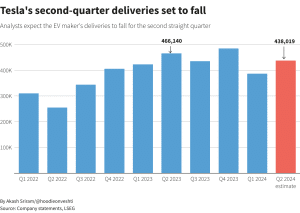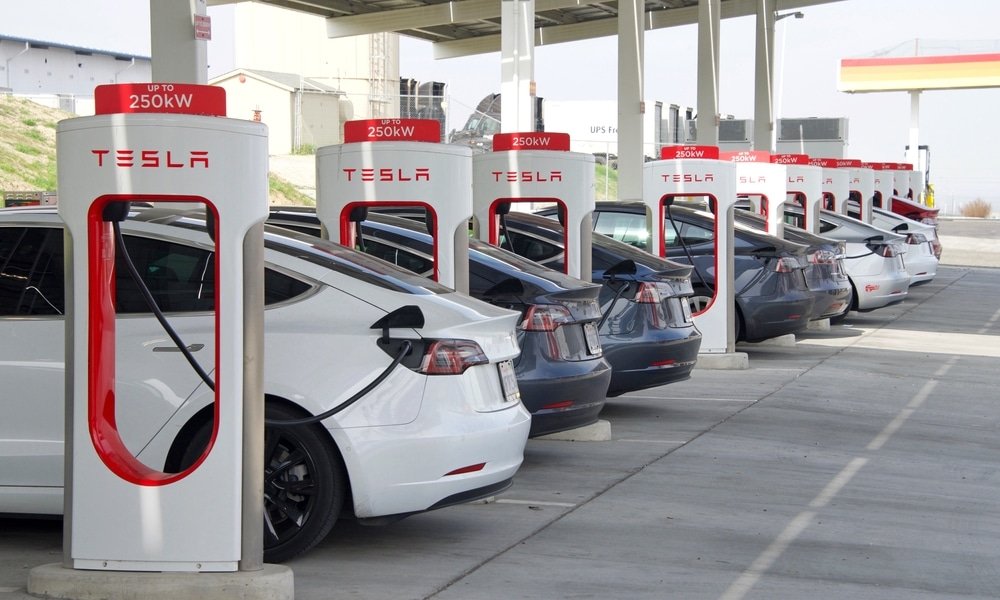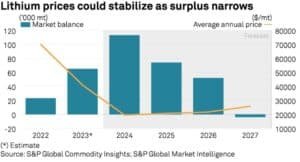Tesla shares surged Tuesday, reaching their highest levels since January, following the release of Q2 2024 production and delivery numbers that beat analysts’ expectations. This is amid the growing sentiment that the EV market is slumping.
Tesla reported delivering 443,956 vehicles in the second quarter and producing 410,831 vehicles. While deliveries were down 5% compared to the second quarter of 2023, they surpassed analysts’ consensus of around 438,019.
For the second consecutive day, Tesla was the biggest gainer on the S&P 500, with shares rising 10.2% to close at $231.26. The stock has gained 17% over the past two sessions, although it remains down about 7% since the start of the year.

After a challenging first half of 2024, Tesla stock began to rebound last week amid optimism for its quarterly numbers. This is further boosted on Monday by positive delivery figures from several of Tesla’s Chinese rivals.
Tesla further announced it will release its Q2 financial results after the bell on July 23.
The EV leader’s positive results despite low market sentiment cement its uncontested place place in the EV industry. Its peers rather show a losing stance in their EV plans.
Navigating EV Challenges
Polestar has faced slow sales and significant cash burn, losing nearly 95% of its value since spinning out of Volvo Car AB. Amid rising tariffs on Chinese-made EVs, Polestar is adapting its business plan.
The US now imposes a 100% import levy, and the EU is set to formalize tariffs up to 48%.
To mitigate these impacts, Polestar plans to reduce supply chain costs and shift some production to South Carolina this summer, aiming to reach break-even cash flow by 2025.
Mercedes-Benz has also revised its plan to become an all-EV brand by 2030, now investing millions into further developing internal combustion engines (ICE). Mercedes CEO Ola Källenius stated that combustion engines will last “well into the 2030s,” necessitating massive investments to meet stricter carbon emissions rules.
The company admitted it was overly ambitious with its electrification goals – a common issue among automakers facing setbacks in EV transitions due to insufficient charging infrastructure and low demand.
Just 3 years ago, Mercedes’ parent company, Daimler, announced plans to switch from “EV first to EV only”. The company initially aimed for a lineup without diesel and gasoline engines by the decade’s end.
General Motors faced similar challenges with its Chevy Bolt, which suffered from battery issues leading to costly recalls. This reality check has prompted many automakers to revise their electrification timelines, realizing that the transition to EVs is more complex than initially anticipated.
What Slump? Breaking Sales Records for EVs
Interestingly, South Korea seems undaunted by the decline in global electric vehicle sales. Both Kia and Hyundai are bucking the trend of declining EV sales with their record-breaking numbers in 2024.
Kia set a new EV sales record, selling 29,392 units in the first half of the year. This marked the best half-year for EVs in the company’s history. The EV6 is Kia’s leading electric model, with 10,941 units sold, an increase of 31.3%.
Hyundai also reported impressive figures, with the Ioniq 5 having its best June ever and the Ioniq 6 sales up 113% compared to last year.
Hyundai’s overall vehicle sales rose 2.2%, but June sales fell by 2.5%. Kia experienced a 2.0% drop in overall sales for the first half of 2024, with June sales down 6.5%.
Despite these declines, strong EV sales have significantly bolstered both brands, highlighting the growing importance of EVs in their portfolios.
Notably, Tesla has been approved by South Korea’s Ministry of Environment to sell regulatory automotive emission credits, also known as carbon credits, within the country in May. This marks a significant milestone for the EV giant, showcasing a stronger presence of EVs in the South Korean market.
Confirmation Amid EV Optimism
Another major news dampening the EV sentiment was the rumor that Northvolt will not pursue its $7-billion battery factory in Canada. The truth, however, is that Europe’s major EV battery maker confirmed it will proceed with the construction of such a factory on Montreal’s South Shore as planned.
Northvolt specializes in lithium-ion batteries for EVs and energy storage.
The Swedish battery manufacturer is behind schedule on its Scandinavian mega-factory and is conducting a strategic review to determine project timelines. The Montreal plant could start manufacturing electric battery cells and cathode active material by 2026.
This massive EV battery plant construction and Tesla’s undeniable EV push are both bullish for the very element that powers the EV revolution – lithium.
In March, lithium prices saw a slight increase, but they declined by June 2024 due to expected reductions in downstream battery production. A seasonal rebound in plug-in electric vehicle (PEV) sales is anticipated from September onward, which could help reduce market surpluses and stabilize prices.
Despite uncertainties such as potential supply cuts and project delays in the lithium market, the long-term outlook for PEV adoption remains promising, driven by the launch of more affordable vehicles, which could further support prices.
Amid challenges in the global EV market, Tesla’s stock price surge shows it remains the undisputed champ in the industry. While competitors like Polestar and Mercedes-Benz navigate setbacks, Kia and Hyundai set records, highlighting the evolving landscape of EVs and its main fuel lithium.
- INTERESTING READ: Is the EV Market’s Momentum Slowing?


